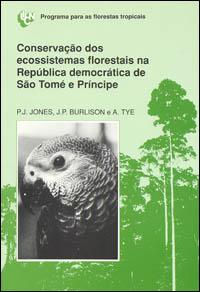

Related content
Categorias e critérios da EICAT da UICN : primeira edição
Como resposta a estas questões, foi desenvolvida uma classificação padronizada dos táxones exóticos, baseada na magnitude dos seus impactos ambientais. EICAT (Classificação do Impacto Ambiental de Táxones Exóticos) o trata-se de um método simples, objetivo e transparente para classificar táxones exóticos de acordo com a magnitude dos seus impactos prejudiciais para o ambiente nas áreas recetoras. Com base na evidência dos impactos causados nos táxones nativos nas áreas em que foram introduzidos, os táxones exóticos são classificados em uma de cinco categorias de impacto. Cada uma destas cinco categorias de impacto representa uma magnitude de impacto diferente, dependendo do nível de organização biológica (indivíduo, população ou comunidade) sobre a qual o impacto é exercido e da reversibilidade do mesmo.
UICN Painel do Rio Doce
O desastre de Fundão em 2015 foi um dos maiores desastres ambientais da história do Brasil. O rompimento da barragem próxima à cidade de Mariana liberou cerca de 39 milhões de m3 de rejeitos, que percorreram 670 km até chegar ao Oceano Atlântico. Nesse trajeto, os rejeitos resultaram em 19 óbitos, devastaram ecossistemas e interromperam modos de vida e meios de subsistência de milhares de pessoas. Em apoio às atividades de restauração, a UICN instituiu o Painel do Rio Doce, um Painel Independente de Assessoria Técnica e Científica (Independent Scientific and Technical Advisory Panel, ISTAP) com a missão de prestar assessoramento especializado em diversas áreas. Composto por cientistas nacionais e internacionais de renome, o Painel atuou de 2017 a 2022. Este relatório descreve o trabalho do Painel e suas influências e impactos de longo prazo.
Diretrizes para o manejo de organismos vivos confiscados
O comércio ilegal de animais silvestres aumentou dramaticamente na última década; no entanto, os esforços de fiscalização destinados a mitigar essa ameaça também o fizeram. O sucesso na aplicação da lei frequentemente envolve a apreensão e o confisco de espécies selvagens de diversos taxa de plantas, animais e fungos. Essas apreensões podem incluir partes de espécimes não vivos na forma de artefatos, alimentos ou produtos medicinais, mas, em muitos casos, envolvem indivíduos vivos. Com confiscos cada vez mais frequentes e muitas vezes um grande número de indivíduos envolvidos, é importante seguir as melhores práticas na abordagem de manejo para maximizar o papel na conservação e o bem-estar individual dessas plantas e animais. Este documento tem como objetivo fornecer orientação sobre essas melhores práticas.
Using the IUCN red list criteria at the national level : a regional consultative workshop for South and Southeast Asia… : proceedings and recommendations
A regional workshop was held to develop a shared understanding of the IUCN global Red List criteria, threat categories and the process of listing species according to the threat of extinction with an emphasis on lessons learned, key constraints and priority needs. The report presents country status reports from Cambodia, India, Indonesia, Lao PDR, Malaysia, Nepal, Pakistan, Philippines, Sri Lanka, Thailand and Vietnam, plus conclusions and recommendations.
Global strategy on invasive alien species
The spread of invasive alien species (IAS) is creating complex and far-reaching challenges that threaten both the natural biological riches of the earth and the well being of its citizens. Summarising key findings of the Phase I Synthesis Conference held in September 2000 in Cape Town, Republic of South Africa, this publication presents ten strategic responses that address how to mitigate the threats of IAS. Directed toward the decision-makers whose policies and practices are affecting the movement of species around the world, this strategy strives to provide a resource to increase awareness and provide policy advice.
Land, people and forests in eastern and southern Africa at the beginning of the 21st century : the impact of land relations on the role of communities in forest future
The way in which forest land is owned directly influences the status of the forest, its condition and the way in which it is managed. The greater the security of local forest tenure, the stronger the interest and will of the community towards its security. One of four papers commissioned by IUCN towards building a comprehensive profile on the subject of community involvement in forest management in eastern and southern Africa, this publication addresses the function of property relations and State-people relations in matters of governance and management. The study is comparative in nature, with a continuing examination of commonality and difference in the handling of property rights in respect of rural communities.

